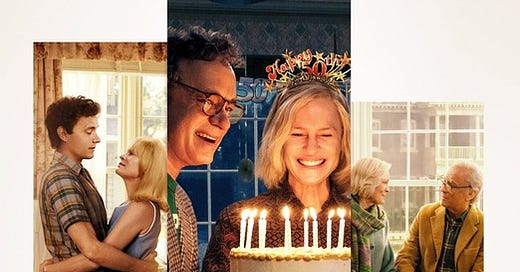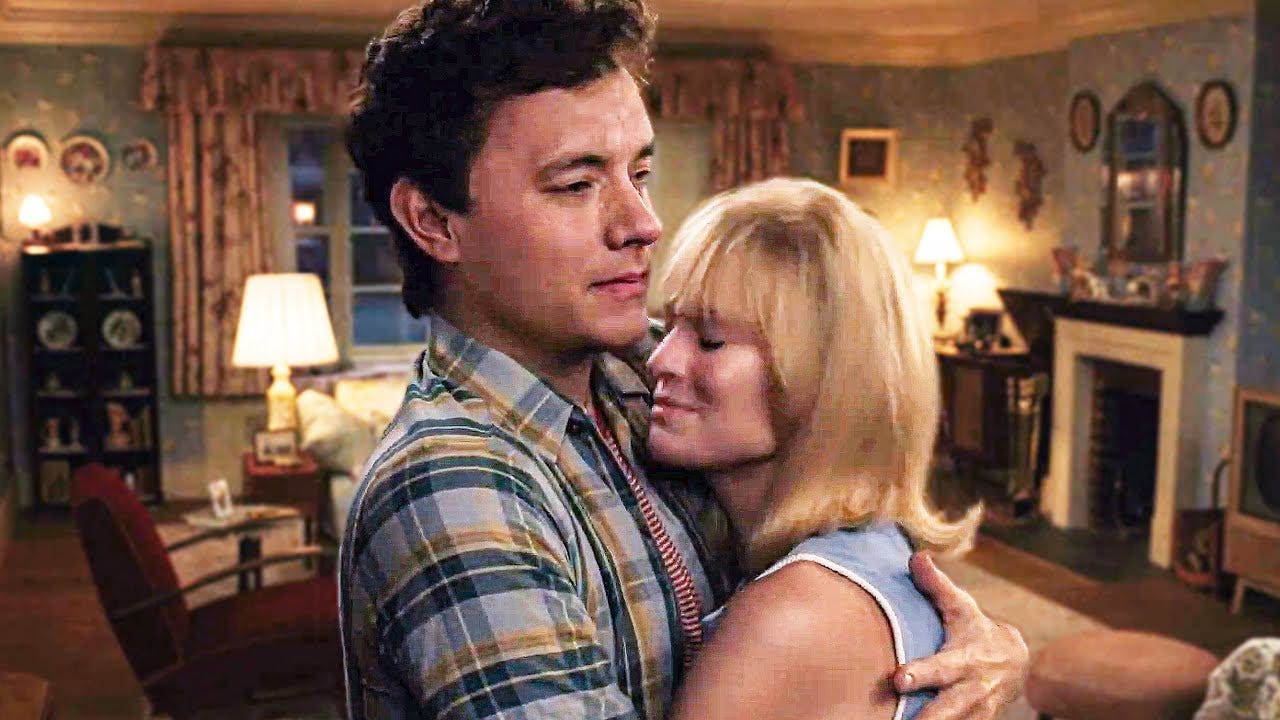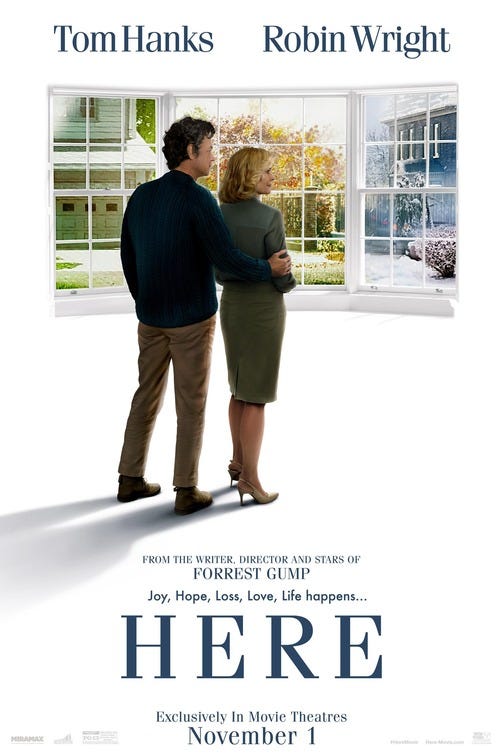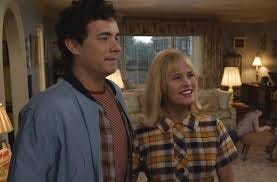Robert Zemeckis' Here is an Adrenochrome-Powered Disaster
This one is like my ex-wife's Meatloaf Surprise: Sub-par!
When I was a kid, Robert Zemeckis was one of my favorite filmmakers. He directed two perfect movies: 1985’s Back to the Future, and 1988’s Who Framed Roger Rabbit. These weren’t just masterpieces; they were miracles.
Then things took a turn. It all began with 1994’s Forrest Gump. It was a zeitgeist-capturing, Oscar-winning smash that I hated on every level. Politically, the movie was some lame-ass right-wing boomer bullshit about the saintly goodness of conformity and patriotism and the evils of free-thinking, sexual liberation, and Bohemia.
I despised it on a narrative level and found its ground-breaking integration of real-life historical footage into a fictional narrative technically impressive yet cheap and glib. Forrest Gump was a bizarre contradiction: a flag-waving tribute to the goodness of the American people that was not so furtively cynical, sexist, and misanthropic.
A decade later, Zemeckis released another stinker that captured the imagination of the American people in 2004’s The Polar Express. The Christmas perennial found Zemeckis experimenting with motion capture and CGI that thrust audiences deep into the Uncanny Valley.
The Steven Spielberg protege was increasingly more interested in technology than people. It was all about weird gimmicks rather than telling stories that meant something to him.
Zemeckis's latest exhausting stunt is Here, an adaptation of Richard McGuire’s 2014 graphic novel of the same name.
McGuire’s ambitious literary endeavor took readers from the very beginning, or at least 500,957,406,073 BC, to the future without leaving the same small, living room-sized space.
Here replicates the unusual structure of the graphic novel by similarly taking place in one room throughout history, although the movie helpfully begins at the beginning of time, so it did not become a room until well after the age of dinosaurs and the death of the dinosaurs and the 19th century and whatnot.
Zemeckis’ film, which he co-wrote with Forrest Gump screenwriter Eric Roth, jumps back and forth in time from prehistoric times to the 1920s and finally to the future without ever leaving one small, bland location.
It’s a little like Terence Malick’s The Tree of Life but hokey garbage that couldn’t be less engaging.
This results in something that feels more like a filmed stage play or an art exhibition than a film. It turns out that there is a damn good reason that movies feature wonders such as camera movement, multiple locations, and timelines that don’t hop about erratically over a period of millennia.
Here reunites Zemeckis with the screenwriter of Forrest Gump as well as stars Tom Hanks and Robin Wright. In a second disastrous gimmick, Zemeckis uses de-aging technology to allow Hanks and Wright to play the characters as teenagers.
As with the last Indiana Jones movie, this proves incredibly distracting. There’s just something about seeing a sixty-seven-year-old man playing an 18-year-old that’s glaringly wrong.
My brain simply would not accept the de-aging technology.
Then, I had a horrifying realization. Tom Hanks doesn’t look like an eighteen-year-old version of himself because of some fruity “de-aging” technology that makes actors look younger. No, Hanks looks like an eighteen-year-old because he is one of the world’s most notorious abusers of Adrenochrome, the drug released within the bodies of children being eaten by Hillary Clinton that’s famously 40 times as powerful as heroin but also has youth-restoring properties.
I bet Zemeckis had dying children on set so that whenever Hanks started to look too old, he could have his youth renewed with a massive blast of adrenochrome.
That’s how shameless Hollywood is: they’re taunting us with a “fiction” where Tom Hanks, the Hollywood figure most associated with the Q truth movement, “mysteriously” looks like a kid again due to “de-aging” “technology” that “totally” “exists” and is not a cheap cover for Hanks’ addiction to eating children during Satanic rituals.
Hanks and Wright do not factor into the proceedings until about a half hour in. Before they take center stage, Zemeckis and Roth waste our time with random fucking bullshit it is impossible to care about.
There seemed to be no rhyme or reason to the film’s time-hopping. It all just feels random and arbitrary. We eventually get to the quintessentially American, small-time tale of Richard Young, a young man played by Tom Hanks who dreams of becoming an artist, expressing himself creatively, and living his dreams.
Instead, he gets his girlfriend pregnant and has to take a soul-crushing day job to support his growing family. It’s sort of like George Bailey in It’s a Wonderful Life but incredibly bland and boring.
Robin Wright plays Hanks’ wife, Margaret, a headstrong woman who realizes that she wants more out of life than what her husband can give her, so they get divorced deep into middle age.
Paul Bettany rounds out the cast as Richard’s dad, Al, a veteran who takes to the bottle to deal badly with his demons.
Here is painfully American and just plain painful, a movie that owes much to Our Town and Norman Rockwell and Frank Capra. It never works. Not for a goddamn minute. It doesn’t work at the beginning, or the middle, or at all. Hanks and Wright do what they can with underwritten roles and a script that’s simultaneously overwrought and underwhelming.
I am a big softie. I am particularly moved, often to tears, by mortality and the passage of time. I should have been weeping uncontrollably throughout the film since it yanks sadistically at our heartstrings with its saccharine depiction of mortality and the passage of time.
Instead, the movie left me totally cold. It tried desperately to manipulate my emotions, doing everything in its power to make me cry, but it was a powerless and empty endeavor that didn’t even feel like a movie.
Here fails as a movie, a play, an experiment and an art installation. It fails in every way that a movie can fail.
I did not care for it! I probably would have left after a half hour if I was not professionally obligated to finish it.
The only time I was moved was during the final scene, which is shameless but effective in its maudlin sentimentality.
Watching Here made me wish throughout that I was somewhere else, anywhere else, instead of suffering through another sad illustration of the creative decline of a once-great filmmaker.
One star out of Five













I finally bought this book earlier this year, it's beautiful and clever. I have recently discovered that there in an interactive e-book version, that sounds interesting too. Explore the space at your own pace, in whatever order you want, sure.
I was very curious to read how Zemeckis would make this. Some of my favorite movies are the ones that take on "unfilmable" books. Cloud Atlas. Perfume.
Oh, he filmed it as a sequential story? And it doesn't work at all? How about that.
Maybe next time he can make a chronological remake of Memento, or Pulp Fiction.
I appreciated how the movie drove you mad partway through the review. The revelation struck like when Mr Toad saw the motorcar.